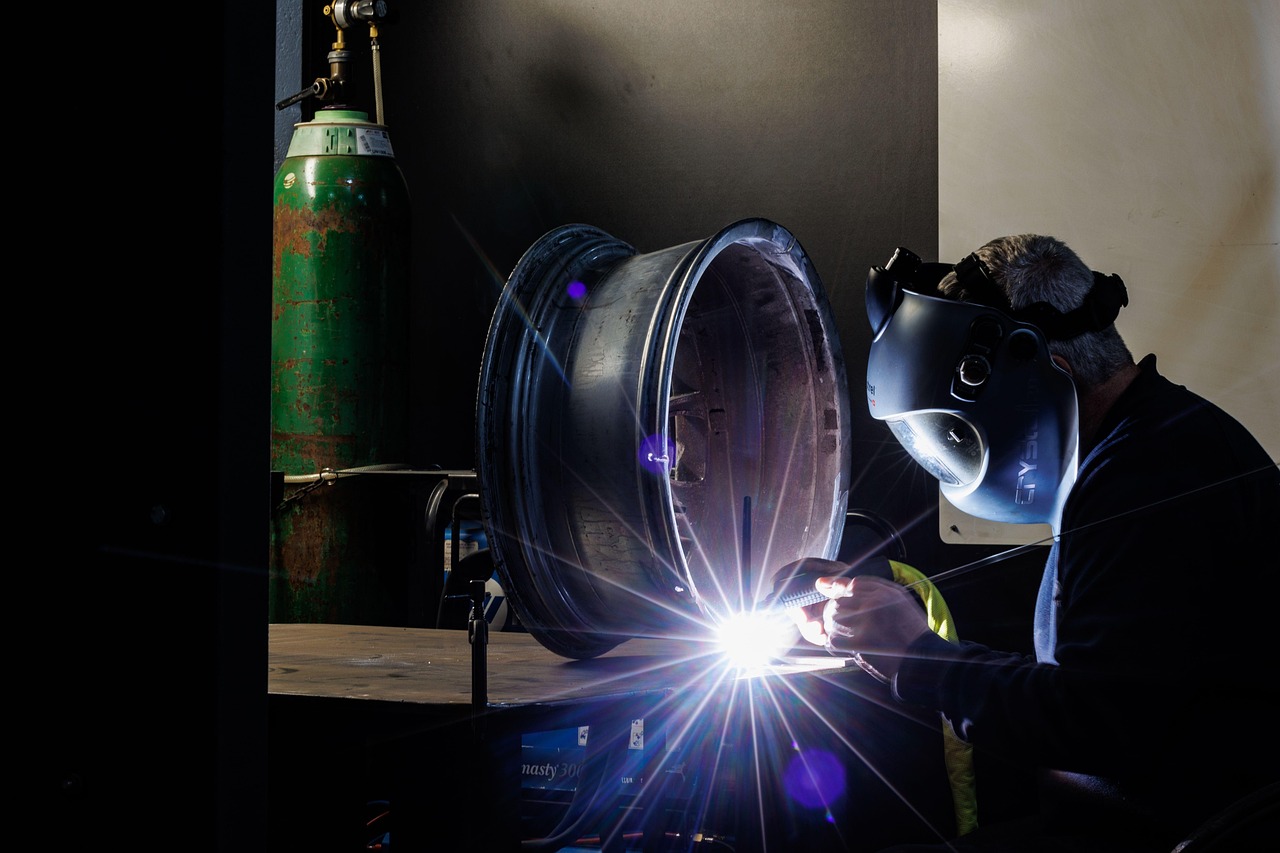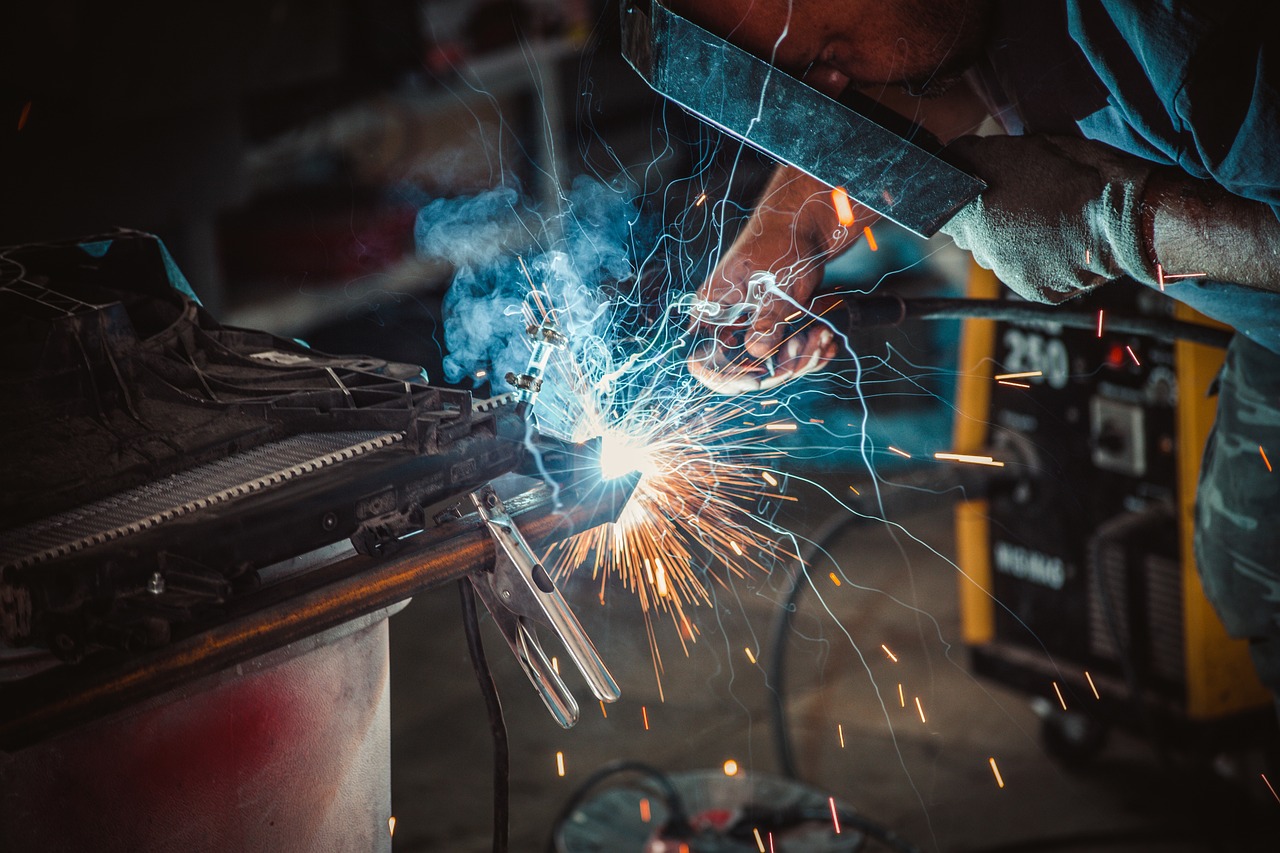When working with metals, understanding their unique properties is essential for achieving strong, durable results. Aluminum and steel are two widely used materials, each with distinct characteristics that influence their welding processes. While steel is known for its strength and density, aluminum offers lightweight benefits but presents challenges like oxide layer formation and thermal conductivity.
These differences impact the techniques and equipment required for effective welding. For instance, aluminum’s lower melting point and higher heat conductivity demand precise temperature control. On the other hand, steel’s density and strength make it a preferred choice for heavy-duty applications.
We’ll explore how these materials compare in terms of thermal behavior, corrosion resistance, and cost efficiency. By understanding these factors, you can make informed decisions for your projects, whether in aerospace, construction, or other industries.
Key Takeaways
- Aluminum is lightweight but requires specialized welding techniques due to its oxide layer.
- Steel is stronger and denser, making it ideal for heavy-duty applications.
- Thermal conductivity and melting points differ significantly between the two metals.
- Proper shielding gas and filler materials are crucial for aluminum welding.
- Material selection impacts cost, efficiency, and application suitability.
Understanding Material Properties and Challenges
Material characteristics significantly influence the welding process and final results. To achieve strong, durable welds, it’s essential to understand the physical and chemical differences between metals. These traits determine how heat is managed, how materials expand, and how welds form.
Physical and Chemical Characteristics
Steel and aluminum differ fundamentally in their atomic structure. Steel is a ferrous metal, containing iron, while aluminum is non-ferrous. This distinction affects their behavior during welding. For example, aluminum forms an oxide layer quickly, which can interfere with weld quality if not properly managed.
Key differences include:
- Steel’s density and strength make it ideal for heavy-duty applications.
- Aluminum’s lightweight nature is beneficial but requires precise techniques due to its oxide layer.
- Electrical resistivity varies, impacting the welding process.
Thermal Conductivity and Expansion Behavior
Thermal properties play a critical role in welding. Aluminum has a higher thermal conductivity, meaning it dissipates heat faster. This requires higher heat input and shorter welding times compared to steel. Steel’s lower conductivity allows for more controlled heat distribution, facilitating robust weld formation.
Additional considerations:
- Aluminum’s narrow plastic range demands precise temperature control.
- Thermal expansion is three times higher in aluminum, affecting joint design.
- Proper shielding gas and filler materials are crucial for aluminum welding.
An industry example highlights the importance of choosing the right filler material. For instance, using a helium-blend shielding gas can reduce hydrogen absorption, minimizing porosity in aluminum welds.
Welding Steel vs Aluminum: Techniques and Process Considerations
Achieving high-quality welds depends on mastering the techniques tailored to each material. Whether working with steel or aluminum, understanding their unique demands ensures strong, durable results. Let’s explore the key factors that influence the process.

Heat Input and Temperature Control
Managing heat is critical when working with different metals. Aluminum’s high thermal conductivity requires faster weld speeds and precise temperature control. This prevents distortion and ensures proper fusion. For example, aluminum often needs three times the welding current compared to steel.
Steel, on the other hand, is more forgiving due to its lower conductivity. This allows for slower weld speeds and better heat distribution. Proper heat input is essential to avoid porosity and weak joints in both materials.
Specialized Equipment and Shielding Gas Requirements
Working with aluminum often demands specialized tools. Push-pull feeders or spool guns are commonly used to handle its soft filler wire. These tools ensure smooth wire feeding and reduce the risk of incomplete fusion.
Shielding gas plays a vital role in protecting the weld pool. For aluminum, a helium-argon blend is often preferred to minimize porosity. Steel typically uses pure argon or a CO2 mix, depending on the application.
Choosing the right filler material is equally important. Aluminum fillers must match the base metal’s properties to prevent cracking. Steel fillers are selected based on the alloy’s strength and corrosion resistance.
Practical Applications and Cost Implications
The choice of material significantly impacts both performance and cost in industrial applications. Whether it’s aerospace, construction, or food production, each industry relies on specific metals to meet its unique demands. Understanding these practical uses helps optimize both efficiency and expenses.
Industry-Specific Uses and Fabrication Methods
In aerospace, aluminum is favored for its lightweight properties, reducing fuel consumption and improving performance. For example, 7075 aluminum is often used in structural components due to its exceptional strength. On the other hand, stainless steel is preferred in food production equipment because of its corrosion resistance and ease of cleaning.
Construction projects often rely on carbon steel for its affordability and durability. Its high strength makes it ideal for heavy-duty applications like bridges and skyscrapers. Meanwhile, aluminum’s rust-proof nature eliminates the need for post-treatment finishes, reducing additional costs in marine and industrial applications.

Cost Efficiency and Material Strength Considerations
Aluminum’s lower density translates to reduced shipping costs, making it a cost-effective option for large-scale projects. However, its higher production energy requirements can offset some savings. Steel, while heavier, is more energy-efficient to produce, especially in Electric Arc Furnaces (EAF).
Long-term durability also plays a role in cost efficiency. Steel’s strength often results in lower maintenance costs over time. Aluminum, while lightweight, may require more frequent repairs in high-stress environments. By carefully selecting the right material, industries can balance upfront costs with long-term benefits.
Preparing Materials and Avoiding Common Welding Issues
Proper preparation is the cornerstone of successful welding projects. From cleaning to storage, every step impacts the final weld quality. By following best practices, you can avoid defects like porosity and ensure strong, reliable results.
Pre-Weld Cleaning and Proper Storage
Cleaning the material before welding is essential. Aluminum, in particular, forms an oxide layer that can interfere with the process. Use stainless steel brushes or solvents like acetone to remove contaminants. This step prevents porosity caused by moisture or oil residues.
Proper storage is equally important. Keep materials in a dry, controlled environment to reduce exposure to humidity. Vertical placement minimizes surface contact, further reducing contamination risks.
Preventing Porosity and Managing Oxide Layers
Porosity is a common issue in aluminum welding, often caused by hydrogen absorption. To avoid this, ensure surfaces are clean and dry before starting. Using the right shielding gas, such as argon, also helps protect the weld pool from contaminants.
Managing oxide layers is critical. Aluminum’s oxide layer melts at a much higher temperature than the base metal. Proper cleaning and the use of appropriate filler materials ensure a smooth, defect-free weld.
Optimizing Joint Design and Wire Feeding Techniques
Joint design plays a significant role in weld quality. For aluminum, use wider joint geometries to accommodate its higher thermal expansion. This reduces stress and prevents cracking.
Wire feeding is another key factor. Aluminum’s soft filler wire requires specialized tools like spool guns or push-pull systems. These ensure consistent wire delivery, minimizing issues like birdnesting or incomplete fusion.
By following these best practices, you can achieve stronger welds, reduce repair time, and save on costs. Proper preparation not only enhances quality but also ensures long-term durability.
Conclusion
Mastering the nuances of metal properties ensures optimal results in any project. Understanding the distinct characteristics of materials like steel and aluminum helps in selecting the right techniques and equipment. Proper heat input, shielding, and material preparation are crucial for achieving strong, durable welds.
Different applications require tailored approaches to maximize efficiency and cost savings. For instance, aluminum’s lightweight nature is ideal for aerospace, while steel’s strength suits heavy-duty construction. Proper handling of the oxide layer and using the right filler materials can prevent common issues like porosity.
With our expertise, you can achieve both quality and cost efficiency in your projects. We invite you to contact our team for professional guidance and an accurate RFQ process. Let us help you make informed decisions for your next project.

